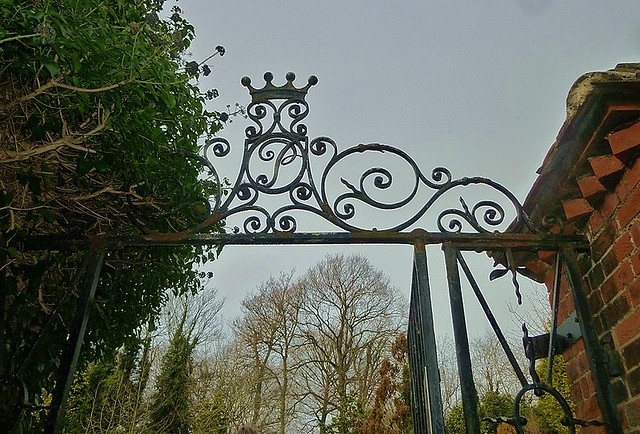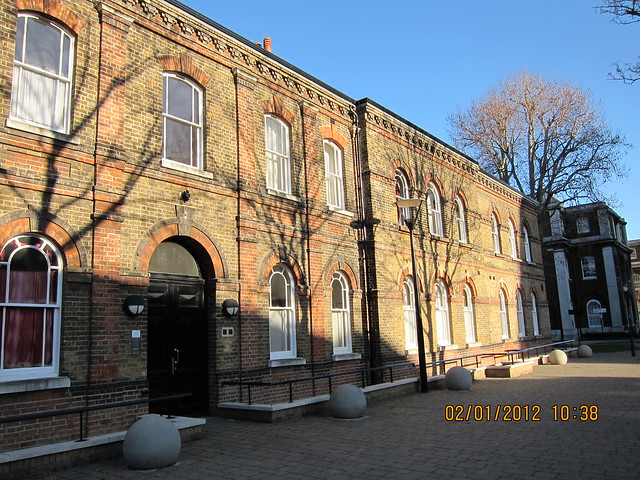
I came across the name Samuel Edmund Phillips while reading about his son, Major Charles Edmund Stanley Phillips O.B.E., F.R.S.E., F.Inst.P., who used to ride his horse from Shooters Hill to his workplace at the Royal Marsden Hospital in South Kensington. I often walk up Shooters Hill past his memorial shelter near Christ Church School, and wonder about its place in local history. Samuel’s obituary in the Electrical Engineer records that he achieved a lot in his life of just 45 years:
It is with deep regret we have to record the death of Mr. Samuel Edmund Phillips, which occurred somewhat suddenly at his residence at Shooter’s Hill, Kent, on Saturday last. He had been in failing health for some years, and suffered greatly from an internal complaint which proved to be caused by an ulcer.
Mr. Phillips, when a boy, was brought into contact with telegraphy, his father being at that time engaged with Dr. Whitehouse in carrying out experimental work in connection with the first Atlantic cable. He subsequently accompanied his father in the first Malta and Alexandria cable expedition, and in 1863 he became a member of the staff which Colonel Patrick Stewart formed to go out with the Persian Gulf cable, remaining at Bushire as a junior clerk. At the end of three years’ service he returned to England, and obtained an appointment on the electrical staff of Messrs. Latimer Clark, Forde, and Co., leaving these gentlemen to become electrician to Mr. W. T. Henley, in whose service he remained for 10 years. At Mr. Henley’s works he was appointed manager of the cable department, and occasionally he accompanied cable expeditions as head of the electrical department. In 1875 he joined Mr. W. Claude Johnson in partnership, and a small works was established at Charlton. This formed the nucleus of the present extensive range of factories which are so well known to all connected with the electrical industry throughout the world.
As an inventor Mr. Phillips has given us the oil insulator, which has not only been largely adopted for telegraph lines in India, Egypt, and other countries, but has proved of immense value for overhead lines for electric lighting and the transmission of power in all quarters of the globe.
Mr. Phillips took the keenest interest in scientific matters generally, and to his good judgment and sound common sense may be attributed in a great measure the success of his undertakings. His genial manner and generous nature made him a universal favourite, and his loss will be deplored by a very wide circle of friends and acquaintances. It is not customary even in deploring the loss of an old and valued friend to abstain from the impersonal, yet we cannot help saying that the late Mr. Phillips was one of those quiet, unobtrusive men to whom England owes so much. He, in common with his surviving partner, was imbued with the view that it is necessary for a firm’s success to have a reputation for thoroughness, and together they built up a reputation for the firm’s work that gives it a foremost place among our manufacturers.

Samuel’s memorial has an eventful history. Originally a drinking fountain given in 1893, it was allowed to fall into disrepair, and was restored in 1957. Then in 1985, according to David Lloyd Bathe’s history of Shooters Hill, “Steeped In History”, it was reduced to a pile of rubble by a heavy vehicle, but was restored by the local council. The line “Write me as one that loves his fellow men” on the memorial comes from the poem Abou Ben Adhem by the poet and writer James Henry Leigh Hunt:
Abou Ben Adhem
Abou Ben Adhem (may his tribe increase!)
Awoke one night from a deep dream of peace,
And saw, within the moonlight in his room,
Making it rich, and like a lily in bloom,
An angel writing in a book of gold:—
Exceeding peace had made Ben Adhem bold,
And to the Presence in the room he said
“What writest thou?”—The vision raised its head,
And with a look made of all sweet accord,
Answered “The names of those who love the Lord.”
“And is mine one?” said Abou. “Nay, not so,”
Replied the angel. Abou spoke more low,
But cheerly still, and said “I pray thee, then,
Write me as one that loves his fellow men.”The angel wrote, and vanished. The next night
It came again with a great wakening light,
And showed the names whom love of God had blessed,
And lo! Ben Adhem’s name led all the rest.
The Johnson & Phillips company that Samuel founded with Walter Claude Johnson was based at the Victoria Works in Victoria Way, Charlton, which was hit by one of the last V2 rockets to fall in Greenwich on 9th March 1945.

The Phillips family lived in Castle House, which is shown on the 1866 ordnance survey map as being located just off to the east of the track that leads from Shooters Hill to Severndroog Castle. Major Charles Phillips later sold the Telegraph Field, where the old semaphore had stood, to the War Memorial Hospital Committee for £3500 to form part of the site for the new hospital, along with the crown property Hazelwood and an adjacent strip of land. He later donated the sum he had received for the Telegraph Field to the fund for building the new hospital. The place where Castle House once stood now appears to be a car park in the Memorial Hospital grounds.
What an interesting shelter!
As a technical aside: I had been trying, unsuccessfully, for some time to take the “panoramic” view of the memorial at the top of this post using the free Nokia Panorama software on my N8 mobile phone. It didn’t seem to be able to match up adjacent sections, despite the, to my eyes, abundant clues. Then I upgraded my phone to the Symbian Belle release, which included a free copy of Scalado’s Camera Lover Pack, saving myself a whole one pound and 50p. Scalado‘s software worked first time; I should have known those clever Swedes wouldn’t let me down!
It’s a great shame to see the end of the Symbian software that still drives the majority of the world’s smartphones despite its rapid decline over the last year following Nokia’s adoption of Windows Phone, but great that the Nokia Symbian engineers are going out with a bang with their 41MP camera phone the 808 PureView.






























